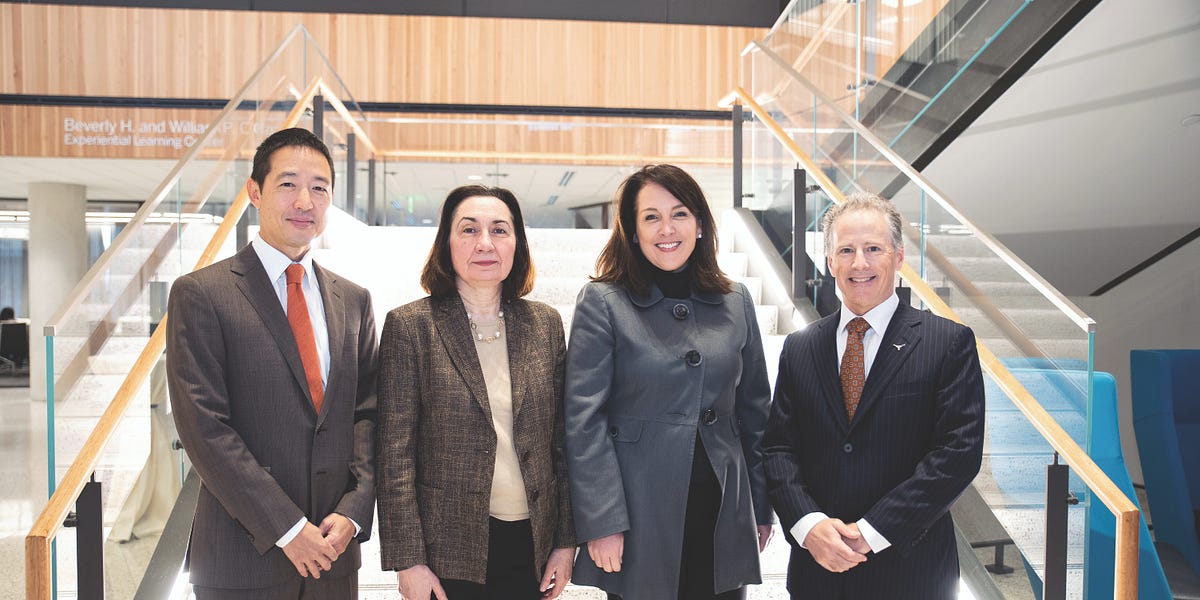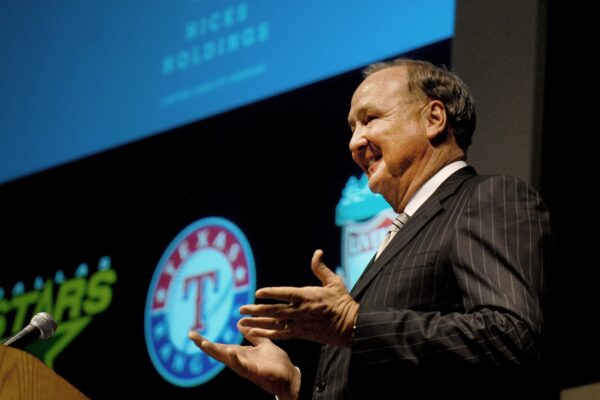Partly Cloudy for Business in 2019
Disruptive technologies will continue to proliferate, while state economic growth is expected to slow
By Judie Kinonen

Global uncertainty and a tight labor market threaten to dampen economic growth in Texas this year — but only somewhat, according to panelists at the 2019 University of Texas McCombs Business Outlook events. Some of the state’s top economists and business executives shared a cautiously optimistic outlook in January and February with audiences in Austin, Dallas, Houston, and San Antonio.
The state’s economy will grow more slowly this year than last, according to panelists from the Federal Reserve Bank of Dallas, Mine Yücel, Keith Phillips, and Robert Steven Kaplan. They predict only 1 to 2 percent growth, citing uncertainty as a main headwind. “A lot of businesses in our surveys report that due to trade uncertainty, they’re hesitant to expand,” said Phillips.
Labor is another constraint, as companies face an aging workforce and an erosion in the quality of education, said Kaplan.
Highlighting one effort to improve education in Texas was Kate Rogers, president of the Holdsworth Center, an initiative funded by HEB to train and support superintendents and principals on public school campuses. Rogers said the organization is working with seven districts now and selecting six more for its next cohort.
Another essential element of growth in Texas is expansion of the Houston Ship Channel, which accounts for about 20 percent of the state’s GDP, said Janiece Longoria, chair of the Houston Port Authority. She has proposed widening the Houston Ship Channel from 530 feet to 700, and deepening it to stave off problems after flooding.
Challenges in Innovation
Advances in genomics have ushered in a new era for the health care industry, said Dr. Mark Shen, MBA ’16, president of St. Louis Children’s Hospital. But the obstacle now, for the U.S., is to slow the growth of spending in the world’s most expensive health care system.
In the oil and gas industry, innovations may not always have the expected outcome, said James Hackett, chair and CEO of Alta Mesa Resources Inc. Hackett explained how the industry’s long investment cycle makes the risk of new methods and devices more challenging.
Connection and Disruption
The internet celebrates its 30th anniversary this year, connecting 55 percent of the world’s population — 4.19 billion people, said Robert Metcalfe, professor of Information, Risk, and Operations Management at McCombs. This connectivity catalyzes an “upstart ecosystem,” he said. “Moving forward, we need to look at building more connectivity and leveraging it.”
Connectivity is also the buzzword for city governments, many of which are embracing the internet of things, according to Erin Nelson, BBA ʼ91, CEO and director of CSDC Systems. She said state and local government spending on smart city technology is growing each year by 17 percent.
Technologies like the smart grid are dramatically changing how utility companies interact with customers, said Cris Eugster, CEO of CPS Energy of San Antonio. Innovations such as smart meters, predictive analytics in customer care, and new leak detection technologies all point to a cultural shift in the utilities industry, said Scott Prochazka, president and CEO of CenterPoint Energy. “We’re smack in the middle of the Age of Disruption,” he said.
This article appeared in the spring 2019 issue of McCombs magazine. Click on the link to see the full issue.
About this Post
Share:


